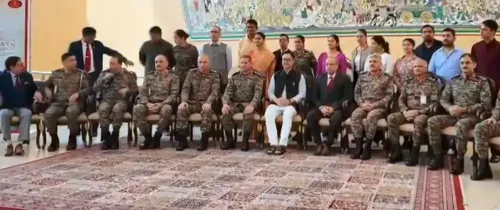How Does the Tribal Affairs Ministry and Coal India Aim to Transform Education for Tribal Students?

Synopsis
Key Takeaways
- Partnership between MoTA and CIL aims at tribal education enhancement.
- 68 EMRS in Chhattisgarh will receive support.
- Over 28,000 students expected to benefit.
- Investment includes Rs 10 crore for educational initiatives.
- Focus on digital education and health for students.
New Delhi, July 18 (NationPress) In a significant move to enhance educational opportunities for tribal students, the Ministry of Tribal Affairs (MoTA) has formed a partnership with Coal India Ltd (CIL) aimed at supporting tribal education in Chhattisgarh. CIL is set to assist 68 Eklavya Model Residential Schools (EMRS) in the state through its Corporate Social Responsibility (CSR) initiatives, impacting over 28,000 tribal students.
The Ministry of Tribal Affairs plays a crucial role in establishing EMRS to provide quality education for Scheduled Tribe children, helping them seize opportunities in higher education and securing employment across various sectors. Besides delivering high-caliber education, EMRS also focuses on the nutrition, health, and overall development of the students.
Currently, there are 479 operational EMRS nationwide. CIL has pledged its support to the Ministry of Tribal Affairs with a funding of Rs 10 crore through its CSR initiatives.
This partnership will facilitate the advancement of digital learning by establishing computer labs, involving the acquisition of approximately 3,200 computers and 300 tablets, along with comprehensive mentorship programs and residential entrepreneurial training camps for students at prestigious institutions like IIT, IIM, and NIT. To ensure the health and hygiene of female students, 1,200 sanitary napkin vending machines and 1,200 incinerators will be installed in schools and hostels.
With this all-encompassing initiative, MoTA and CIL aim to foster a modern and innovative educational environment within EMRS, while also ensuring equal opportunities for students from marginalized communities.
This collaboration strives to close the educational divide and open new pathways for tribal youth through digital education, career preparedness, and an entrepreneurial mindset. It aligns with the government's overarching goals under the NEP 2020 framework to establish equitable and inclusive educational opportunities for all.
It is important to mention that the project will be executed via the National Scheduled Tribes Finance and Development Corporation (NSTFDC).









